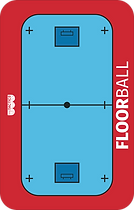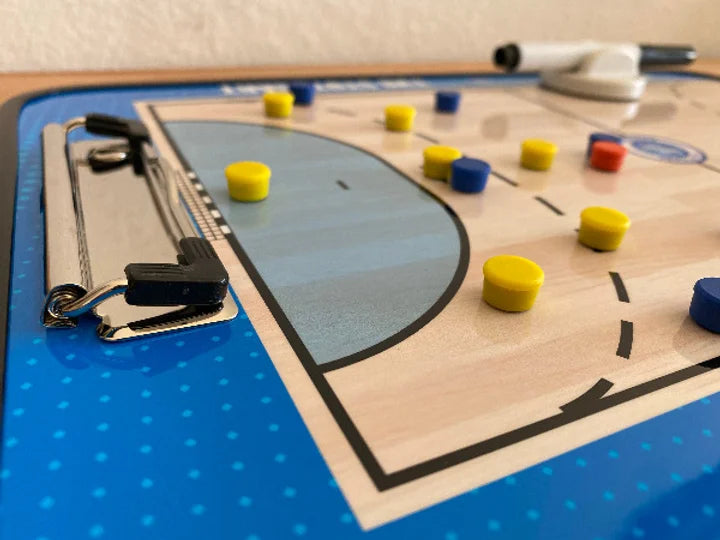
The completely customizable tactic boards from myTACTICS are now also available for the sport "Bandy". The bandy tactic boards are magnetic on both sides, can be written on and wiped off again and can, of course, be completely customized with a club logo, motivational slogan, name and colors.
What actually is bandy? This sport is not very well known in Germany. Bandy is a ball and team sport that is played on ice. Bandy is the forerunner of today's ice hockey and is mainly played in Northern and Eastern Europe and North America. The most successful national team is the men's team from Sweden.
The rules of bandy are more similar to those of soccer and field hockey than those of ice hockey. The pitch is the size of a soccer pitch, while the rink bandy variant is played on smaller pitches in ice rinks. The sport is very popular in Sweden and Russia. In Finland and Norway, it is a fringe sport. Bandy is also played in the Netherlands, Hungary, Kazakhstan, the USA, Canada, Estonia, Latvia, Mongolia and Belarus. 33 nations are members of the Federation of International Bandy.
Playing field and equipment
A team consists of eleven players, there are two halves of 45 minutes each, large goals, no play behind the goal, offside and corner kicks.
Playing time is continuous and is not stopped if play is interrupted.
The pitch is 90 to 110 meters long and 45 to 65 meters wide, roughly the size of a soccer pitch. It is covered with a layer of ice and is usually played in the open air. The goals are 3.50 meters wide and 2.10 meters high. The semi-circular penalty area has a radius of 17 meters. The penalty spot is twelve meters in front of the goal.
The players use a stick that is curved and flattened at the end, i.e. a mixture of a field field hockey stick and an ice hockey stick. The shaft of the stick is 1.20 meters long. The goalkeeper does not have a stick, but tries to fend off or catch the ball with his hands or body. The ball with a cork core is made of bright red or yellow plastic and is about seven centimetres in diameter.
The equipment includes a helmet, knee and arm pads, protection for the genitals and ordinary ice hockey skates. Until the introduction of the helmet requirement in 1966, players wore a cap, which was often padded.
Source: Wikipedia



